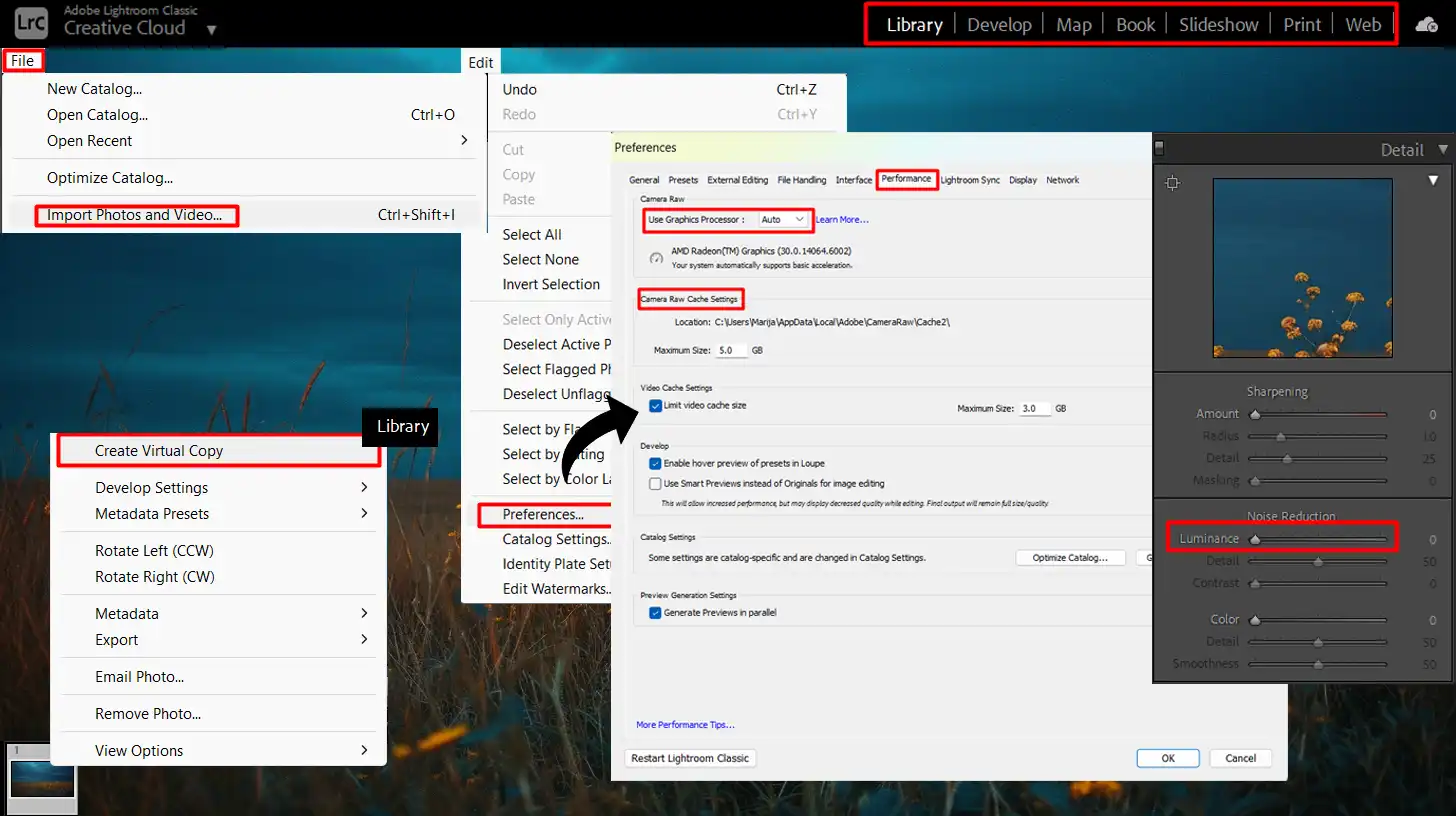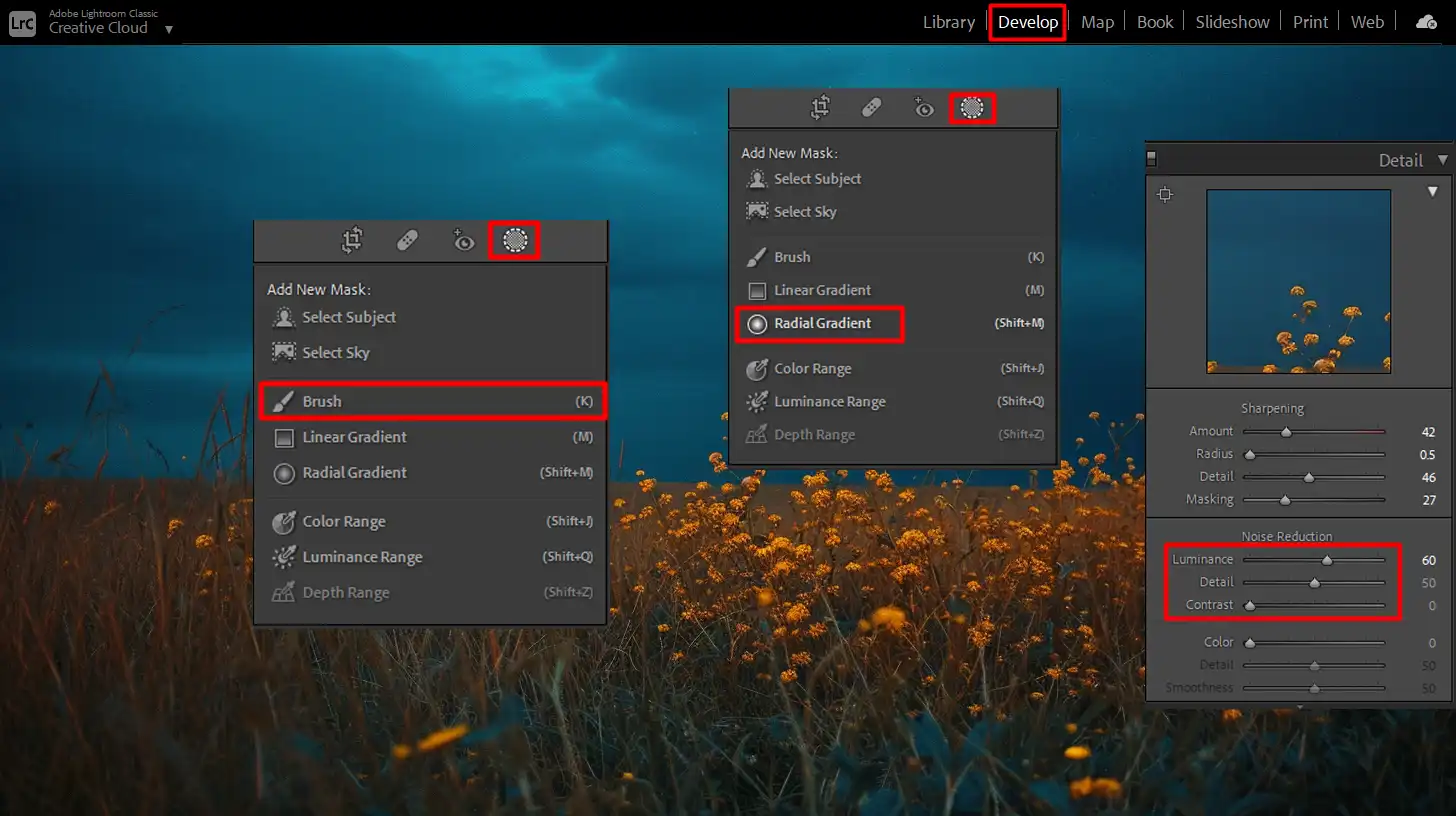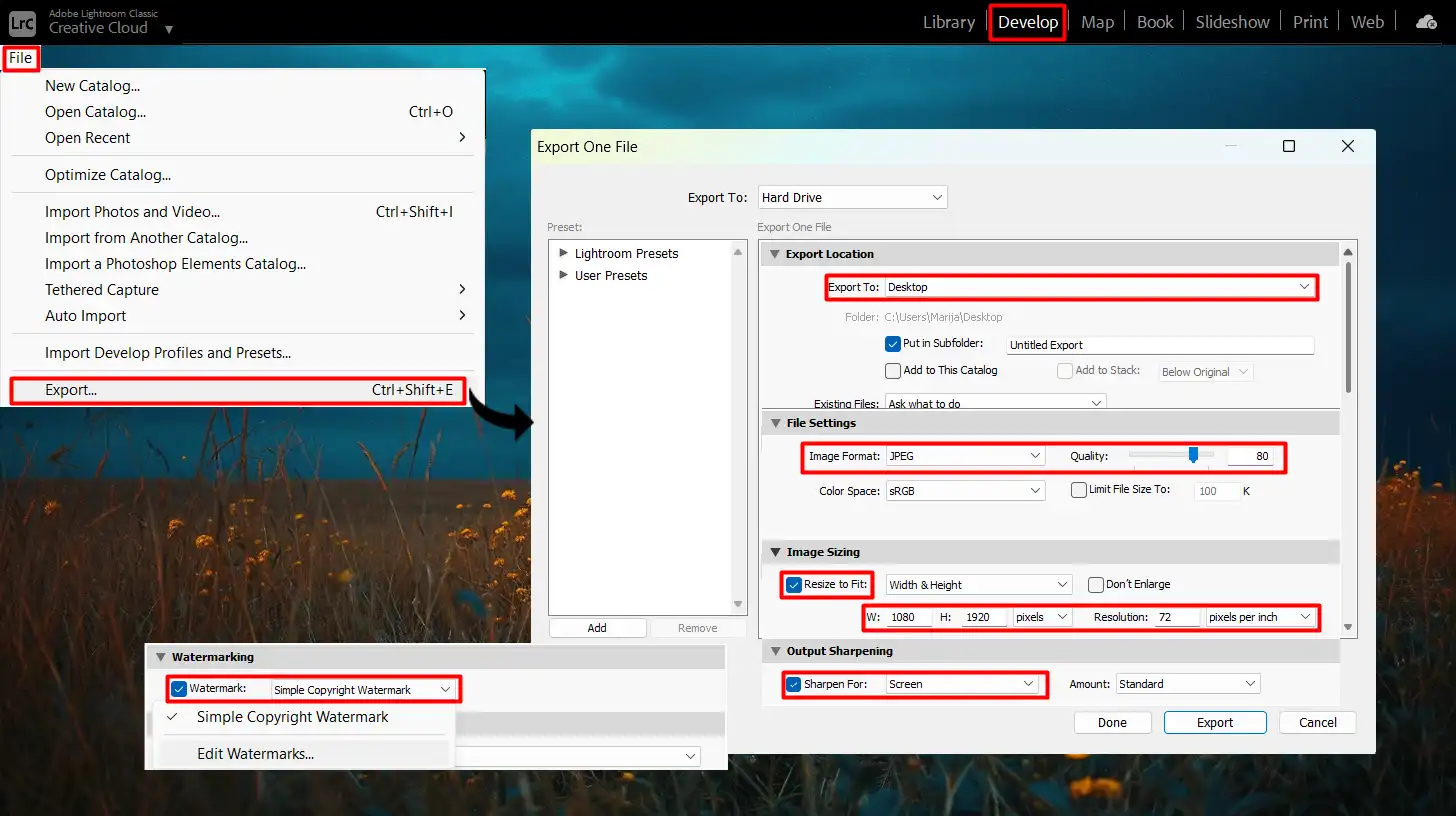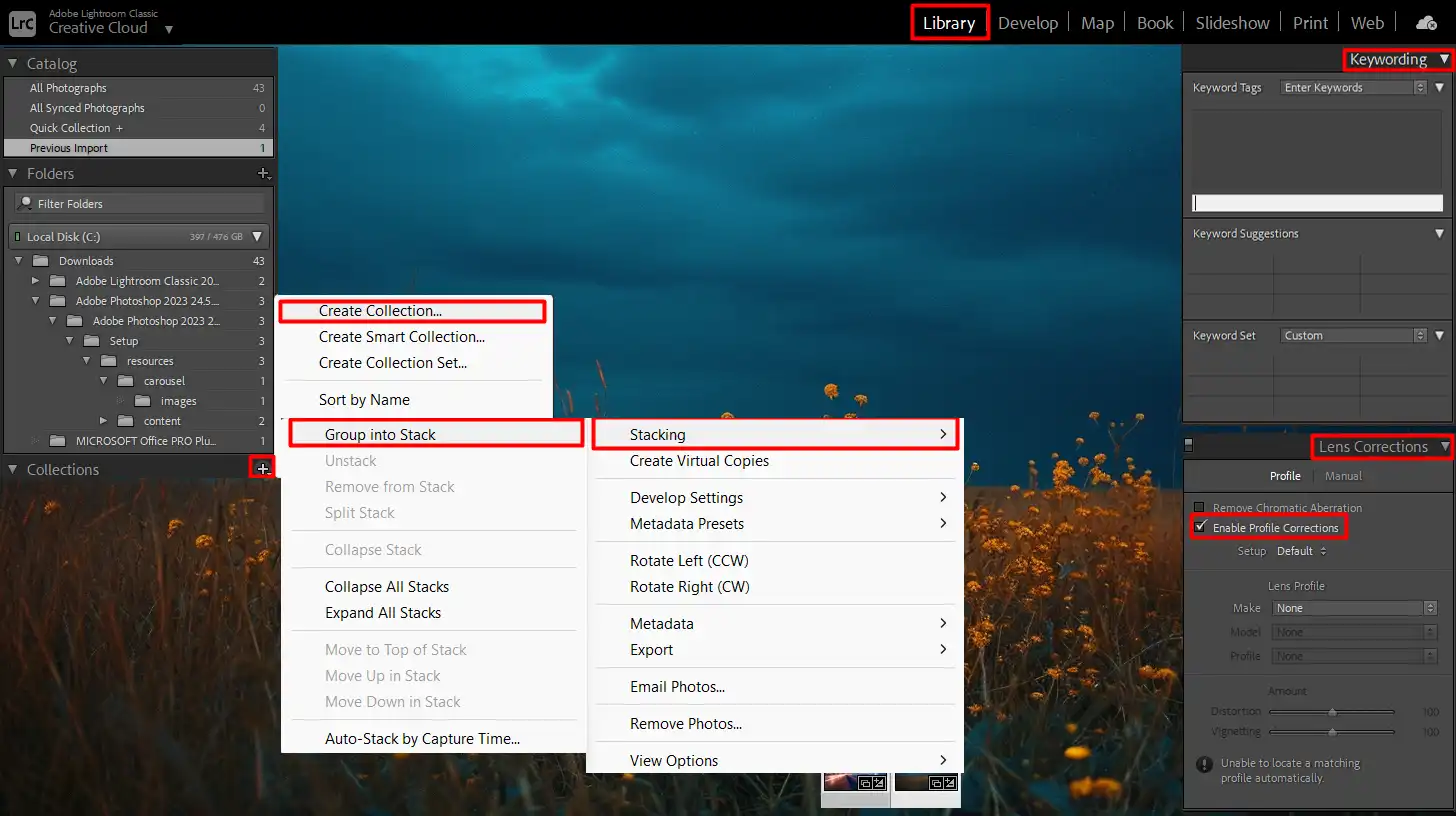
When I first discovered Lightroom Classic, it felt like unlocking a new world of photo editing possibilities.
Are you tired of struggling with photo editing software that just doesn’t meet your needs? Imagine transforming your images with a few clicks, making them look professional and polished.
Lightroom Classic offers powerful tools that can turn even the most mundane photos into stunning works of art.
Intrigued?
Read on to find out how you can elevate your photo editing game and create captivating visuals effortlessly.
Table of Contents
Lightroom and Lightroom Classic, Which One is Better?
Understanding the differences and features of Lightroom and Lightroom Classic can help you choose the right tool for your photo editing needs.
Let’s get started into what Adobe Lightroom offers and how it fits into the world of digital photography.
What is Adobe Lightroom?
Adobe Lightroom serves as a online service allowing users to edit, organize, and store image across various devices. It offers seamless synchronization through Adobe’s cloud ecosystem.
Users find it easy to access full resolution images anywhere.
What is Lightroom Classic?
Lightroom Classic, part of the Adobe Creative Cloud suite, is well regarded amongst professionals for its robust editing tools. Unlike its online sibling, Lightroom Classic stores images and image files locally on your computer.
The familiarity with internal storage appeals to photographers needing high-level control over their images.
Important Differences Between Lightroom and Lightroom Classic
- Storage: Lightroom uses online storage, while Lightroom Classic relies on internal storage.
- User Interface: Lightroom presents a simpler, more modern design. In contrast, Lightroom Classic has a comprehensive but traditional interface.
- Features: Lightroom Classic boasts advanced tools like noise reduction and the ability to create virtual copies.
- Speed: Internal storage makes Lightroom Classic faster when handling large image files or extensive edits.
- AI Features: Both have artificial intelligence features, with Adobe AI enhancing both, but Lightroom Classic offers more customizable options.
- Synchronization: Lightroom’s online nature ensures synchronization across different devices. This feature is a dealbreaker for users on the go.

Pro Tip: When managing large photo libraries, use face recognition in Lightroom to easily tag and locate people.
Features Comparison
Comparing features helps determine which software best meets your needs.
Here, we’ll explore how the user interfaces of different programs stack up to see which one suits your workflow best.
User Interface
Lightroom and Lightroom Classic offer distinct user experiences:
- Lightroom: Modern, simpler look, ideal for quick edits on the go. Designed to be intuitive for new users, including hobbyist photographers.
- Lightroom Classic: Traditional setup, caters to photographers who prefer detailed control. Imagine trekking through countless images with ease? That's the Classic difference.
Editing Capabilities
When it comes to editing, both options are top-notch, but there are subtle differences:
- Lightroom Classic: Advanced tools such as noise reduction and radial filters, allowing precise adjustments. Local adjustments? Yes, Classic does it best.
- Lightroom: Fewer advanced features but compensates with smart previews and AI masking powered by artificial intelligence, making it easier for on-the-go enhancements. Think of it as having all your photo tools in your pocket.

Performance and Speed
Performance metrics often tell the tale of suitability:
- Lightroom Classic: Stored locally, it processes large image files quickly, whether they are in RAW or JPEG format.
- Lightroom: Online, may lag due to upload/download times but offers seamless access across devices. For those relying on iPads and iPhones, Lightroom's synchronization is a real boon.
Pro Tip: Use smart collections in Lightroom Classic to organize your images automatically based on criteria you set. This saves time and keeps your library tidy.
When choosing between CR2 or JPEG for your photos, consider how it impacts performance and speed. CR2 files, being larger, can slow down your editing process, while JPEGs are faster and more efficient.
Storage Options
Exploring different storage options can help you choose the best setup for managing your photos.
Let’s take a look at how cloud works in Lightroom and what it offers for your photo organization and access.
| Feature | Cloud Storage in Lightroom | Local Storage in Lightroom Classic |
|---|---|---|
| Access | Accessible from any device with internet | Limited to the device where images are stored |
| Synchronization | Automatic sync across devices | Manual sync, no cross-device integration |
| Storage Capacity | Reduced need for local storage | Limited by internal drive size |
| Internet Dependence | Requires stable internet | No internet required |
| File Access Speed | Can be slower for large files | Faster access to large files |
| Subscription Costs | Ongoing subscription fees | No subscription costs |
| Backup Control | Managed by Adobe | Full control, requires manual backups |
Cloud Storage in Lightroom
Lightroom’s online storage is a game-changer for many users. Your images are stored online, allowing you to access them from any device with internet connectivity.
This can be incredibly convenient when you’re working on the go or want to share your images quickly.
Online storage provides seamless synchronization across multiple devices.
When you make an edit on your laptop, it shows up on your phone and tablet instantly. This integration really shines when dealing with large volumes of images.
Local Storage in Lightroom Classic
For those who prefer a more traditional approach, Lightroom Classic’s internal storage is still very relevant. Images are stored directly on your internal drives, giving you immediate access without needing an internet connection.
This is significant for professional photographers handling thousands of high-resolution images.
Internal storage allows more control over managing and backing up files. You can organize your digital space as you see fit, and backup strategies like using external drives are simple to implement.
While some find this method a bit old-fashioned, it definitely gets the job done effectively.
Pros and Cons of Cloud-based storage
Evaluating the pros and cons of cloud-based storage helps you understand its impact on your setup
Pros:
- You can access your images anywhere.
- Automatic synchronization between devices.
- Reduces the need for large internal storage.
Cons:
- Requires a stable internet connection.
- Can be slower for uploading and downloading large files.
- Subscription costs can add up over time.
Pros and Cons of Internal Storage
Evaluating the benefits and drawbacks of internal storage helps you understand its impact on your setup.
Let’s start by examining the advantages of using internal storage for your data.
Pros:
- No reliance on internet connections.
- Faster access to large files.
- More control over file management.
Cons:
- Limited by the size of local drives.
- Higher risk of data loss if not properly backed up.
- Lacks seamless integration across multiple devices.
Pro Tip: Optimize your workflow by using both storage options; keep high-priority images on cloud for easy access and archive older projects on local drives. This hybrid approach can offer the best of both worlds.
Workflow and Usability
Using Lightroom or Lightroom Classic can dramatically improve your photo management and editing experience. This section breaks down the workflow and usability aspects to help you understand how to best utilize these powerful tools.
Importing and Exporting Photos
Managing how you bring photos in and out of your editing software can streamline your workflow.
First, let’s look at the process of importing photos and what options are available to make it efficient.
Importing Photos
Getting your images into Lightroom or Lightroom Classic is the first basic step.
Simply import your photos from your camera, phone, or any storage device. Lightroom CC even offers online imports, allowing you to start working on your images virtually anywhere.
Exporting Photos
Once editing is complete, exporting them is equally easy. You can choose different formats, quality levels, and even add watermarks during exportation.
This helps to prepare your final images for printing, web–sharing, or storage. For those looking to share their work on social media, understanding the best Lightroom export settings for Instagram can make a significant difference in how your images are displayed online.

Organizing Your Photo Library
Organization is significant. Lightroom users find this task simple due to features such as catalogs, collections, and keywords.
To organize your images:
- Use folders and subfolders for manual categorization.
- Add keywords to quickly locate specific images.
- Apply color labels or star ratings to prioritize.
The map module in Lightroom Classic allows geo-tagging, making it easy to sort images based on locations. This organization becomes important when you handle thousands of images.
Syncing Across Devices
If you often switch between devices, syncing is a life-saver. Lightroom CC, being online, allows seamless synchronization across all your devices.
Start editing on your desktop and continue on your tablet. Everything stays up-to-date with smart previews even when you’re offline.
Pro Tip: Maintain a balanced workflow. Use Lightroom CC for convenience and cloud accessibility while leveraging Lightroom Classic for intensive editing and file management on local drives.
Mixing both optimizes your workflow and provides maximum flexibility.
The Lightroom photo editor excels in syncing across devices, ensuring your edits are consistent whether you’re on a phone or desktop.
Pricing and Subscription Plans
The financial aspect matters when diving into Lightroom. Here, we break down its pricing and compare it with Lightroom Classic to ensure you get the best value.
Adobe Lightroom Pricing
Lightroom, popular among casual and professional photographers, offers subscription plans:
- Monthly plans start at $9.99 per month. Contains Adobe Photoshop.
- For $19.99 monthly, you also get 1TB of online storage. This additional storage is handy for backing up images. Any heavy cloud usage would benefit from this plan.
Lightroom Classic Pricing
LR Classic also has a subscription model:
- The basic plan is $9.99 per month. This includes both Lightroom and Lightroom Classic.
- No extra cost for the history panel or plugin support.
It’s appealing to many photographers who prefer internal storage. It can often be a deal breaker for those with varying access to the internet.
Value for Money
If you shoot and edit on multiple devices, a online Lightroom may make sense. It allows seamless work across mobile, desktop, and the web. Syncing to the cloud is automatic.
However, if you edit and manage your entire library on a single computer, Lightroom Classic is a better choice which doesn’t require extensive cloud access.
Both options cater to different needs. So, choose based on your workflow. Investing in a package that includes Photoshop provides a full spectrum of editing tools. These tools cater to various styles and complexities of editing images.
Pro Tip: Always take advantage of free trials to test the functionalities before committing financially. Trial periods reveal if the investment suits your editing requirements.
For those looking to streamline their editing process, understanding the difference between Adobe Photoshop and Lightroom can be significant.
Knowing some essential tools in Lightroom can significantly enhance your workflow efficiency.
Who Should Use Lightroom?
Determining if Lightroom is the right fit depends on your experience level and needs. Let’s explore why Lightroom might be a great choice for beginners getting started with photo editing.
For those wondering who should use Lightroom, the Ultimate Adobe Lightroom Training can guide you through its features and benefits.
This training is perfect for photographers of all levels.
Best for Beginners
Lightroom is perfect for beginners. It offers an easy-to-navigate interface without overwhelming options.
Beginners find the automatic cloud sync helpful for sharing photos across devices.
Lightroom includes tutorials to help you get started, making the learning curve manageable.
Additionally, there are numerous photography articles that can further aid in mastering the basics.
Best for Professionals
For the professional photographer, Lightroom Classic is a top choice.
It provides extensive control over every aspect of image editing.
Manual adjustments and advanced settings are at your fingertips, fitting perfectly into a professional’s workflow.
Internal storage ensures faster processing times without the need for constant internet access.
Professionals often use Lightroom shortcuts to streamline their editing process.
Use Cases for Lightroom
Everyone has different needs when it comes to photo editing.
Here’s how Lightroom can fit into various scenarios:
- Editing on the Go: The online version allows you to edit images from anywhere, anytime.
- Internal storage: Lightroom Classic is ideal for those who prefer to keep their images on a single computer.
- Family Photos: Perfect for organizing and editing everyday images, making them look their best.
- Small Business: Small business owners benefit from its ease of use and comprehensive selection tools.
Lightroom meets diverse needs. Its online platform enables editing from multiple devices. With options to match different workflows, it covers both simple adjustments and complex edits.
Pro Tip: Always back up your images. Online storage solutions are convenient. Yet, maintaining a local backup ensures you never lose valuable photos.
Who Should Use Lightroom Classic?
Choosing the right tool often depends on your experience and editing needs.
Let’s begin with why Lightroom Classic might be the preferred choice for more advanced users who require in-depth features and controls.
Best for Advanced Users
Lightroom Classic appeals to advanced users who need detailed control. It’s robust and rich with features, perfect for those committed to professional photo editing.
If you’re beyond the basics or have outgrown simpler tools like Apple Photos, Lightroom Classic is a natural step up. It covers intricate editing tasks and allows manual adjustment for every detail, ensuring top-quality results with precision.
Best for Studio Photographers
Studio photographers find Lightroom Classic indispensable. It suits well for those needing organized workflows and consistency in their edits.
Lightroom Classic effectively manages large libraries, providing a seamless experience for batch processing. Features like lens corrections and tethered shooting offer critical advantages for controlled environments.

Use Cases for Lightroom Classic
Lightroom Classic fits multiple needs. Whether you work from a fixed location or need everything on your local system, it offers the flexibility required.
- Professional Workflows: Maximum control over editing settings optimizes professional results.
- Local Storage: Keeps everything on your device without relying on online storage.
- Batch Processing: Quickly applies changes to numerous files, saving time.
- Custom Presets: Allows easy replication of your unique style across projects.
New features introduced in the past year enhance efficiency and streamline operations, making Lightroom Classic an evolving tool.
The online counterparts are convenient, but for those who prefer full control, Lightroom Classic truly makes sense.
Pro Tip: Regularly update your software to enjoy all the latest improvements and functionalities. This way, you’ll always work with the best options available.
For those looking to expand their editing skills, learning Lightroom shortcuts can significantly speed up your workflow.
How to Choose Between Lightroom and LR Classic
Selecting the right software involves understanding your specific needs and workflow.
Let’s look at how to assess your requirements to determine which option suits you best.
Assessing Your Needs
So, you’re torn between Lightroom and Lightroom Classic.
Let’s figure this out together.
If you often edit images on the go, then the online option, Lightroom, might be your best friend.
With it, you can edit on your phone or tablet anytime, anywhere.
But if you’re a detail-oriented photographer who craves more control, Lightroom Classic is ideal for you. It features robust tools that provide precise adjustments for your professional work.
Considering Your Workflow
The next step is to consider your workflow. Do you need constant access to your entire library of images across multiple devices?
If yes, the cloud-based Lightroom will serve you well. It keeps your edits synchronized and accessible.
But for photographers who favor traditional desktop editing and prefer local storage, Lightroom Classic provides an efficient and streamlined workflow.
Evaluating Your Budget
Now, let’s talk money. Lightroom and Lightroom Classic come with different pricing plans under Adobe’s subscription model.
- The cloud-based Lightroom often attracts those who prioritize flexibility and ease of access.
- However, Lightroom Classic can be more financially feasible for professionals needing advanced tools without additional cloud storage costs.
Pro Tip: Consider trying the free trial of both to see which one integrates better with your personal or professional routine.
Frequently Asked Questions (FAQs)

Do professional photographers use Lightroom or Lightroom Classic?
- Professional photographers use both Lightroom and Lightroom Classic, depending on their specific needs and workflow preferences. Lightroom offers cloud-based storage and is great for accessibility across devices. Lightroom Classic, on the other hand, provides more advanced features and is preferred for detailed editing on desktop computers.
Is Adobe Lightroom or Lightroom Classic better?
The choice between Lightroom and Lightroom Classic depends on your requirements:
- If you prioritize cloud-based storage, seamless syncing across all devices, and straightforward interfaces, Lightroom is the better choice.
- If you need robust adjustment tools, local file storage, and detailed workflow options, Lightroom Classic might be preferable.
Which Lightroom version is best?
The best Lightroom version varies by user needs:
- For photographers who are always on the go and need access from multiple devices, the cloud-based Lightroom is ideal.
- For those who require extensive editing capabilities and prefer managing their files locally, Lightroom Classic is recommended.
Should I use both Lightroom and Lightroom Classic?
Using both Lightroom and Lightroom Classic can be beneficial if you:
- Want the flexibility of cloud storage and powerful editing tools.
- Prefer to have backups on the cloud while working extensively on desktop.
- Need to access and edit photos across different devices but also require detailed editing on a dedicated machine.
Conclusion
Both Adobe Lightroom and Lightroom Classic offer powerful tools for editing photos, but they cater to different needs.
From my experience, Lightroom’s cloud features are great for editing on the go, while Lightroom Classic provides deeper control and local storage for those who work extensively on one computer.
If you’re looking to get started or improve your skills, check out my Photoshop Course and Lightroom Course.
For those interested in exploring these tools further, you can visit Adobe’s Photoshop and Lightroom.
They offer great insights into how these programs can help you create stunning photos with ease.
Read more about Lightroom:
















